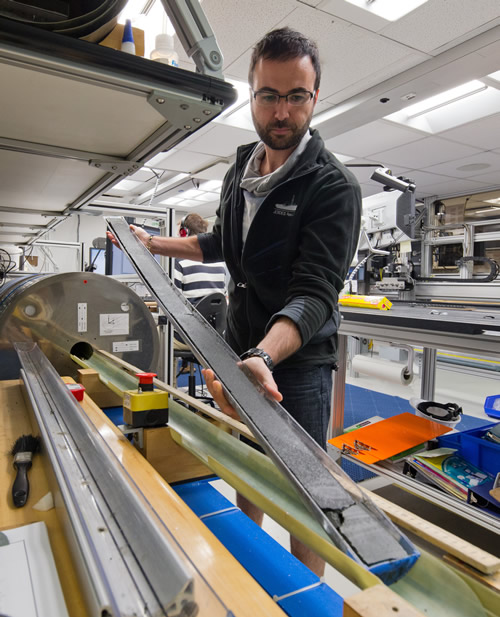
The Earth has experienced many geomagnetic reversals (when the positions of magnetic north and south are interchanged) and excursions (periods of brief disruption but not full reversal) throughout history. Scientists use this fact to determine the age of core samples, and thus determine when sediment was deposited or when a volcano erupted, by studying the magnetic polarity of traces of iron contained within. Here, Marco Maffione (Paleomagnetist, Utrecht University, The Netherlands) loads a core section into a cryogenic magnetometer (or paleomagnetometer). Scientists use liquid helium to lower the temperature of the sensors inside this instrument to −269°C, only four degrees above absolute zero, at which point they become superconducting and capable of detecting magnetic orientation within the core sample. (Credit: Bill Crawford, IODP/TAMU) [Photo ID: exp351_058]
Back to expedition photos.